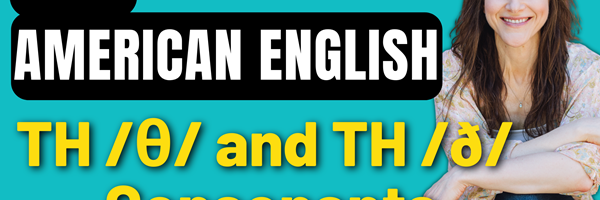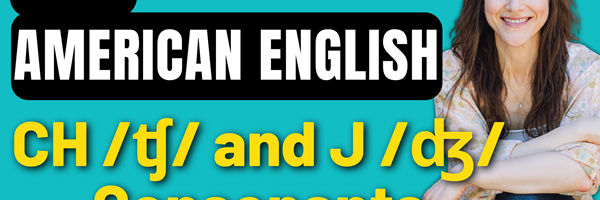(Video Transcript)
Little, alike
People, always
Let’s learn how to pronounce the L consonant in American English.
How to pronounce the L /l/ consonant: Light L
American English has two kinds of L consonant sounds, but you typically won’t see both of them in a dictionary transcription. Instead, most dictionaries will use the same IPA symbol for both types of L sounds.
The first type of L sound in American English is called a light L. This is the L sound when it comes at the beginning of a word or syllable, or when it’s part of an L consonant cluster, like in the words light and glass.
There are three ways to make the Light L sound. All three methods begin the same way: the tongue shape is narrow, which means the sides of the tongue squeeze in, like this.
In the first way of pronouncing the light L, the tongue tip comes up and touches the alveolar ridge, the bumpy place on the roof of the mouth just behind the front teeth.
L, L, L
Remember that the tongue needs to be in a narrow shape. This is different from other alveolar sounds, like the D, T, and N consonant sounds. With these sounds, the tongue is in a wide shape, and either the tip of the tongue or the blade of the tongue, the top of the tongue just behind the tip, touches the alveolar ridge. But the L consonant is made with the tongue tip, and the tongue in a narrow shape.
The second way of pronouncing the Light L is to bring the tongue tip a little lower, to the back of the front teeth.
L, L, L
And the third way of pronouncing the Light L is to bring the tongue tip out of the mouth, between the teeth.
L, L, L
The lips do not participate in the pronunciation of the Light L, so the lips can be relaxed or neutral.
Native speakers may use any of these pronunciations depending on their preferences and the other sounds that occur in the word.
Watch an animation of the Light L consonant sound. This animation was created from actual videos of a real person pronouncing the Light L sound. The animation shows the side view of the person's face, and I slowed it down to half speed. Notice the tongue tip move up to the alveolar ridge.
How to pronounce the L /l/ consonant: Dark L
The second type of L sound in American English is the Dark L. This is the L sound when it comes after a vowel in the same syllable, or when it comes at the end of a word, like in the words feel and bottle.
The Dark L is made very differently than the Light L, and it is usually the more challenging L sound for non-native speakers to pronounce.
To make the Dark L, you first pull the tongue back towards the throat, and the back of the tongue presses down and tenses. The tongue is in a narrow shape, so you should feel that the sides of the tongue squeeze in towards each other. The tongue tip is down, and it can touch the back of the bottom front teeth. The lips are relaxed or neutral, or depending on the vowel that comes before the dark L, the lips may round a little bit.
L, L, L
But be careful not to round your lips too much, like this
OH, Oh, Oh
This will bring the sound forward to the lips. The Dark L is made with the back of the tongue in the back of the mouth, so it resonates back here, not up here. When native speakers round their lips for the Dark L, the sound is still being made with the back of the tongue. That’s where the sound is resonating, back here, not up here.
If you’re struggling with using your lips too much for the Dark L,
Oh, OH, OH
Here’s a tip: Can you make the Dark L while smiling?
L, L, L
This will pull your lips out of the way and force your tongue to do all of the work. It’s challenging, but this is the best way to stop yourself from relying on your lips to make this sound.
Use a mirror to make sure you aren’t rounding your lips. You can even hold your lips back with your hands to make sure your lips don’t come forward.
This first part of the Dark L is what gives the Dark L its name: dark, meaning a lower, deeper resonance. And you should feel the resonance back here,
You may also see and/or feel this muscle move down as you say the Dark L.
L, L, L
This is part of your tongue - it’s the base of your tongue - and this is the muscle that’s moving back and down as you say the Dark L.
Most of the time, the Dark L ends here. For example, when I say a word like people, which ends in a Dark L, my tongue remains down and pulled back, and my tongue tip remains down.
However, sometimes native speakers will use a second step when pronouncing the Dark L. They’ll actually finish the Dark L sound with a Light L, meaning the tongue tip will come up to the alveolar ridge at the end.
This second step is common when linking a word or syllable that ends in a Dark L to a word or syllable that begins with a Light L or a vowel.
For example, the word people ends in a Dark L, and when I pronounce it I typically only say the first part of the pronunciation, the dark part.
People
But when I link the word people to the word are, like in the sentence “People are learning English,” I use the second part of the Dark L pronunciation, the light L, to link people and are together.
People are
People are
People are
There’s just one L sound, a Dark L, but it has two parts: a dark, low part made with the tongue pulled back and low in the mouth, tongue tip down, and a Light L part, made with the tongue tip up at the alveolar ridge.
I’ll say that phrase again. Can you hear both parts of the Dark L?
People are
The most important part of the Dark L is the first part, the tongue pulling back and down, narrowing, and the tongue tip down. You always pronounce that part of the Dark L.
Sometimes the Dark L stops there, and sometimes native speakers add on the second part of the pronunciation, the Light L.
Let’s take a closer look at the L consonant.
L /l/ consonant: Up close and in slow motion
Here is the Light L sound in isolation. Notice how the lips are neutral as I say this sound. The tongue tip comes up to the alveolar ridge, to the back of the front teeth, or just past the teeth - any of these placements are fine. And the tongue is in a narrow shape.
Now the word light. Again, notice the neutral lips, the tongue tip coming up, and the narrow shape of the tongue.
Now the Light L sound in a consonant cluster, like in the word class. The lips are neutral for both the K and L sounds. The tongue tip comes up for the light L, and the tongue is in a narrow shape.
Now for the Dark L. Notice the lips are either neutral or slightly rounded, but they don’t round fully. The tongue is narrow, pulls back and down, and the back of the tongue tenses towards the back of the throat.
Now the Dark L in the word real. See the lips retract and the tongue move up for the EE vowel. Then the tongue pulls back and down for the Dark L, and the lips come forward slightly.
Now the Dark L in the word hold. Notice the lips are rounded for the vowel, and the tongue is low. Then the back of the tongue simply tenses and pulls back for the Dark L, with the tongue tip down.
Remember, dictionaries won’t usually show you the IPA symbol for the Dark L. Instead, they’ll show you just the symbol for the Light L, and this can be incredibly frustrating for English learners. It’s a Dark L when the L consonant sound comes after a vowel at the end of a word or syllable, or when it is at the end of a word.
In the word bottle, the L is a Dark L because it is the final sound. However, the word is spelled with an E at the end. But remember, this is the spelling of the word, not its pronunciation.
L /l/ consonant practice
Let’s practice a few words together. Say the words with me.
Light L:
Lake, L, Lake
alone, L, alone
Dark L:
nail, L, nail
always, L, always
Thanks so much for practicing the L consonant sound with me. I hope this video was helpful! But we don’t have to end the practice here - let’s keep working together! Check out the additional practice videos of the L consonant sound in English Pro, my comprehensive online accent training community. The details on how to enroll in English Pro are in the description below. Thanks, and have a great day!
And I'd love to hear from you - contact me to learn how we can work together to perfect your American English pronunciation!



